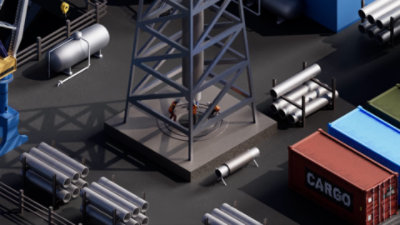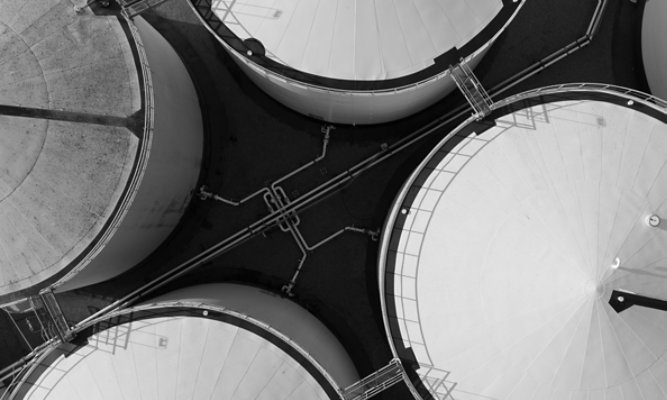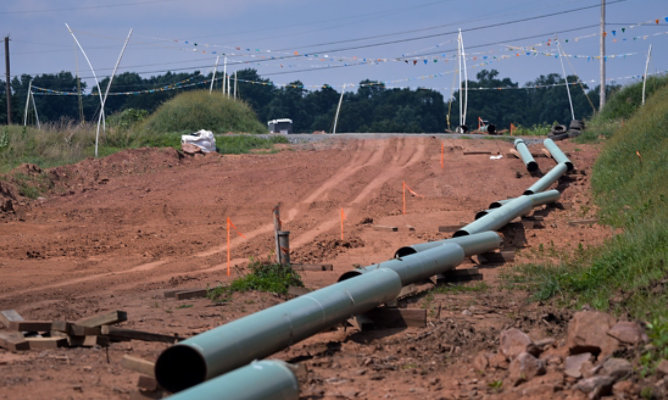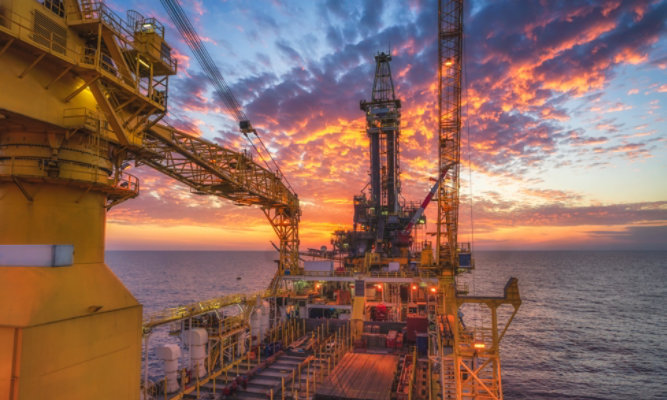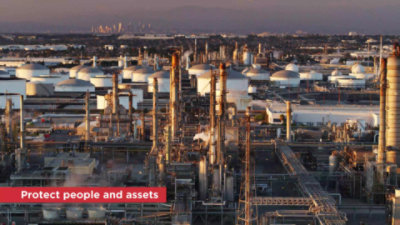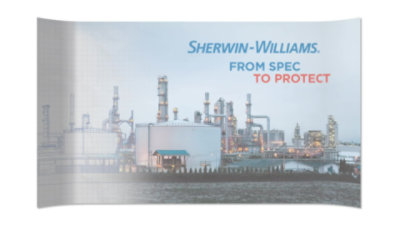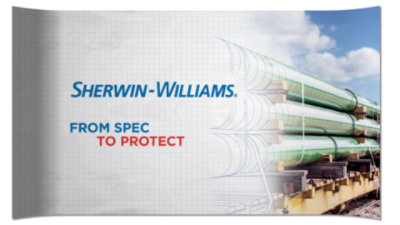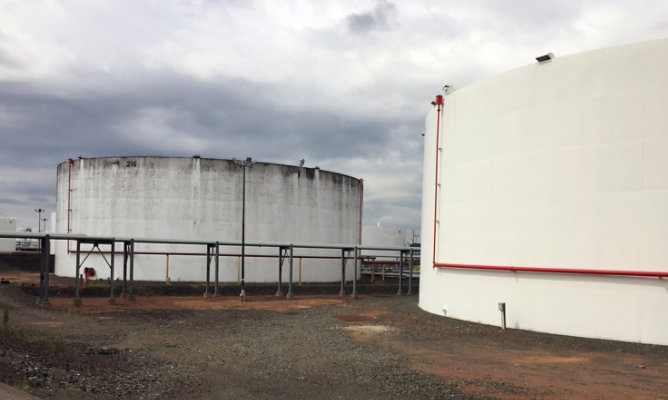Tank Lining Challenges in the Switch to Renewable Feedstocks
Changes in the energy industry have caused a switch in the feedstocks used in the production of fuels as we look for sustainable solutions.
By Michael Harrison, Global Product Director of Linings, Sherwin-Williams Protective & Marine

INTRODUCTION
Changes in the energy industry have caused a switch in the feedstocks used in the production of fuels as we look for sustainable solutions. According to the International Energy Agency (IEA), biofuel usage is growing at around 6% a year1.
Biofuels are considered to have a low carbon footprint. For example, one gallon of biodiesel produces 74% less emissions than traditional diesel2 (2,661 grams of CO2 compared to 10,180g of CO2).
The switch to lipid fuel feedstocks offers challenges to the tank owners (is there a need to re-line storage tanks or will the existing lining work?) and to the lining suppliers (will our linings offer appropriate performance?).
Lipid feedstocks for the production of renewable diesel, sustainable aviation fuel or biofuel have different complications in storage than traditional fossil fuel (crude).
Depending on the storage temperature and the time between loading and unloading these feedstocks can be considerably more aggressive to coatings and linings used for internal protection of storage tanks.
Due to this different exposure, decades of track record and laboratory testing for linings are no longer relevant – we must understand the new normal, backed up with a fresh approach to testing.
PREVIOUS WORK (HISTORY)
Through a series of studies, three key linings were used, allowing for continuity:
A. Solvent-free/UHS epoxy phenolic novolac (traditionally rated to ~266°F (130°C) in crude)
B. Solvent-free novolac epoxy (traditionally rated to ~302°F (150°C in crude)
C. Novolac glass flake vinyl ester (Acid-resistant lining rated to ~212°F (100°C))
The first study was isothermal (in accordance with NACE TM-0174 Procedure B). Tests were run for a prolonged period (up to 24 months):
![15 months exposure in vegetable oil (+DI water) at 140°F [60°C]](https://s7d2.scene7.com/is/image/sherwinwilliams/pm-15-months-vegetable-oil-140-resized:SmartCropThreeToTwo?fit=constrain,1&wid=800)
15 months exposure in vegetable oil (+DI water) at 140°F [60°C]
![15 months exposure in vegetable oil (+DI water) at 160°F [71°C]](https://s7d2.scene7.com/is/image/sherwinwilliams/pm-15-months-vegetable-oil-160-resized:SmartCropThreeToTwo?fit=constrain,1&wid=800)
15 months exposure in vegetable oil (+DI water) at 160°F [71°C]
![15 months exposure in vegetable oil (+DI water) at 180°F [82°C]](https://s7d2.scene7.com/is/image/sherwinwilliams/pm-15-months-vegetable-oil-180-resized:SmartCropThreeToTwo?fit=constrain,1&wid=800)
15 months exposure in vegetable oil (+DI water) at 180°F [82°C]
Lining degradation in these studies had not manifested after six or 12 months and in typical tests may have been deemed acceptable (which is not the case).
Similar exposures (with similar results) were carried out using beef tallow and vegetable oil with free fatty acid added (FFA) to mimic waste cooking oil.
These studies reported a clear time and temperature relationship with performance, as the initial degradation commences at the vapor-liquid interface (see conclusions).
Concurrent to these exposures, the oil was monitored analytically for compositional changes:

This upward trend in free fatty acid with time and temperature explains the observations seen in the immersion studies (the acid content builds up and surpasses the linings' ability to resist at a critical level).
CYCLIC STUDY
Real exposures to feedstocks do not include long-term exposures. It is reported that cargo cycling is likely to be less than 30 days between full to empty. On this basis, cyclic testing (combined with oil analysis) has been commenced to enable a direct comparison with standard long-term exposure. At this stage, we have completed one (1) six-month cycle as illustrated below:

In these exposures, an uncoated, grit-blasted steel panel was included to monitor corrosivity to steel. All tests were completed at the higher anticipated temperature of 180°F (82°C) – pitting corrosion was seen in the vapor phase of all panels:
![Vegetable oil and water – eight months cyclic exposure at 180°F [82°C]](https://s7d2.scene7.com/is/image/sherwinwilliams/pm-8-months-vegetable-oil-180-resized:SmartCropThreeToTwo?fit=constrain,1&wid=800)
Vegetable oil and water – eight months cyclic exposure at 180°F [82°C]
![Vegetable oil and water – six months exposure (no cycling) at 180°F [82°C]](https://s7d2.scene7.com/is/image/sherwinwilliams/pm-6-months-vegetable-oil-180-resized2:SmartCropThreeToTwo?fit=constrain,1&wid=800)
Vegetable oil and water – six months exposure (no cycling) at 180°F [82°C]

Free fatty acid in cycled oil shows a very flat/slight increase in time compared to the massive jump when not cycled.
OBSERVATIONS
Exposure of the uncoated, grit-blasted steel panel has shown corrosion occurs at the vapor interface (where the oil becomes rancid in contact with air) and at the lower end (water rich area) where FFA concentrates in the aqueous phase.
CONCLUSIONS AND NEXT STEPS
The latest stage of testing shows a performance difference between continuous (with no refreshment of the lipid) and cyclic (refreshing of the lipid feedstock) exposure. Evidence suggests this is related to the level of FFA content which is considerably lower in the cycle/ refresh samples.
The relationship between acid resistance and performance is further evidenced by the superior performance of the novolac glass flake vinyl ester (discoloration only) – due to its tolerance to organic acids (formed during degradation of the lipids).
Due to the time/temperature relationship – these studies will be continued up to 24 months to generate comparative real-time data.
ACKNOWLEDGMENTS
Mariah Tucker, Sherwin-Williams, Research and Development Chemist
Lauren Egensperger, Sherwin-Williams, Testing and Certification Chemist
Eric Bidwell, Sherwin-Williams, Testing and Certification Chemist
Ping Liu, Sherwin-Williams, Analytical, Research and Development Senior Chemist
Nilantha P Wickramaratne, Sherwin-Williams, Analytical, Research and Development Staff Chemist
SOURCES
1. IEA, Tracking Clean Energy Progress Report, July 2023, accessed at Biofuels - Energy System - IEA
2. U.S. Department of Energy Department of Energy
ABOUT THE AUTHOR
MICHAEL HARRISON
Michael Harrison, Global Product Director – Linings, has more than 30 years in the development and support of linings in all protective segments with a specific focus on the oil and gas, mining, power generation, and water and wastewater markets. He supports the global business offering for protective tank and pipe linings for terminal and refinery installations in the oil and gas market, among other markets. Harrison has met the requirements of the Coating Inspector Program (CIP) Level 2 Certification from NACE International and has presented at a variety of coatings conferences. He has a degree in applied chemistry from Northumbria University. Contact: Michael.Harrison@sherwin.com
THE SHERWIN-WILLIAMS DIFFERENCE
Sherwin-Williams Protective & Marine delivers world-class industry subject matter expertise, unparalleled technical and specification service, and unmatched regional commercial team support to our customers around the globe. Our broad portfolio of high-performance coatings and systems that excel at combating corrosion helps customers achieve smarter, time-tested asset protection. We serve a wide array of markets across our rapidly growing international distribution footprint, including Energy, Water & Wastewater, Bridge & Highway, Steel Fabrication, Flooring, Manufacturing & Processing, Fire Protection, Marine, Rail and Power.
Discover More
Industry Expertise and Innovation
Explore customised solutions we deliver for customers to address their project and application challenges.
Our Oil & Gas Expertise
Explore our industry solutions and technology to help protect your assets.
LEARN MOREProduct Lookup
Find out more about our innovative coatings for a variety of industries.
FIND A PRODUCT




